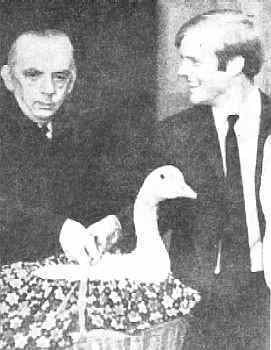In mathematics, a Banach space is said to have the approximation property (AP), if every compact operator is a limit of finite-rank operators. The converse is always true.
Every Hilbert space has this property. There are, however, Banach spaces which do not; Per Enflo published the first counterexample in a 1973 article. However, a lot of work in this area was done by Grothendieck (1955).
Later many other counterexamples were found. The space of bounded operators on ℓ 2 does not have the approximation property (Szankowski). The spaces ℓ p for p ≠ 2 and c 0 (see Sequence space) have closed subspaces that do not have the approximation property.
A locally convex topological vector space X is said to have the approximation property, if the identity map can be approximated, uniformly on precompact sets, by continuous linear maps of finite rank. If X is a Banach space this requirement becomes that for every compact set K ⊂ X and every ε > 0 , there is an operator T : X → X of finite rank so that ∥ T x − x ∥ ≤ ε , for every x ∈ K .
Some other flavours of the AP are studied:
Let X be a Banach space and let 1 ≤ λ < ∞ . We say that X has the λ -approximation property ( λ -AP), if, for every compact set K ⊂ X and every ε > 0 , there is an operator T : X → X of finite rank so that ∥ T x − x ∥ ≤ ε , for every x ∈ K , and ∥ T ∥ ≤ λ .
A Banach space is said to have bounded approximation property (BAP), if it has the λ -AP for some λ .
A Banach space is said to have metric approximation property (MAP), if it is 1-AP.
A Banach space is said to have compact approximation property (CAP), if in the definition of AP an operator of finite rank is replaced with a compact operator.
Every projective limit of Hilbert spaces, as well as any subspace of such a projective limit, possesses the approximation property.Hence every nuclear space possesses the approximation property.Every subspace of an arbitrary product of Hilbert spaces possesses the approximation property.Every separable Frechet space that contains a Schauder basis possesses the approximation property.Every space with a Schauder basis has the AP (we can use the projections associated to the base as the T 's in the definition), thus a lot of spaces with the AP can be found. For example, the ℓ p spaces, or the symmetric Tsirelson space.
